- Home
- Peter Ackroyd
London Under Page 2
London Under Read online
Page 2
When the valley of the Fleet river was being cleared in the middle of the nineteenth century the pavement of an old street was discovered at a depth of 13 feet; the paving stones had been worn smooth by the passage of traffic and by innumerable footsteps. Below this street were found piles of oak, hard and black, of which the purpose was not clear. A few feet below the oak were ancient wooden pipes, which were essentially the hollowed trunks of trees. All these layers of city history were packed so tightly together that they formed a solid mass of clay, gravel, wood and stone. Just at the level of the street, a great number of pins were scattered. Whether they were hairpins, or sewing pins, the sources do not reveal.
Excavation of a Roman pavement in Walbrook in 1869 (illustration credit Ill.2)
There have in fact been stray discoveries of underground London over the centuries. John Stow, in the sixteenth century, reports the discovery of the shank-bone of a “monstrous” man who stood at a height of 10 or 12 feet. It was found within St. Paul’s Churchyard among other bones. It seemed to Stow, therefore, that tales about a race of giants inhabiting the earth were actual truth. It is clear that these “gyants’ bones” were in fact those of a mammoth. It is sufficient to note the fact that there were considered to be marvels buried under the ground. Coins and small statues were always being found but, according to the law of the land, “treasure hid in the earth and found shall belong to the Crown.” In the medieval period there was little interest in what lay beneath, except as a possible home for buried treasure. The underworld was otherwise the domain of demons, and should not be touched. The first Englishmen to conduct proper archaeological studies, John Aubrey and William Stukeley, in the seventeenth and eighteenth centuries respectively, decided to concentrate on more visible sites such as Stonehenge and Avebury. Stukeley did find evidence of Julius Caesar’s camp by Old St. Pancras Church, and traced the line of Roman roads through eighteenth-century London; but that was the extent of his interest. The city was in any case expanding so rapidly, extending in all directions, that no real attention was paid to the subterranean world. In a period of exponential growth, the past does not exist.
Yet it was there. In 1832 a colossal head of the emperor Hadrian was retrieved from the Thames in which it had been buried for 1,700 years. In 1865 a gang of workmen, digging beneath the surface of Oxford Street, found a curious trap-door. They opened it and were astonished to find a flight of sixteen brick steps. They followed them and “entered a room of considerable size.” The walls were built of red brick, with eight arches originally designed to let in the light. In the middle of the chamber was a pool or bath, about 6 feet in depth. It was half-full of water, and a spring could still be seen bubbling up. It was in all probability a Roman baptistery in which the water still flowed from a tributary of the Tyburn. Yet it was demolished to make way for new building. There was still very little interest in what lay under the ground and it was consigned to what one contemporary publication called “the abyss of oblivion.”
When in 1867 building work was being undertaken in Bouverie Street, off Fleet Street, the crypt of an ancient Carmelite monastery was revealed. It was promptly converted into a coal cellar. In the nineteenth century the world under the ground was considered in some way to be dirty and diseased. Subsequent excavations in 1910 revealed that this crypt “is of dressed stonework.… Deep ribs, springing from the angles and from the centre of each side, meet in a large boss carved with a rose.” So in imagination the monastery of Whitefriars rises from the ground of Fleet Street and its environs. We may see the monks in the garden walks and hear them singing their orisons. The Cheshire Cheese tavern rests upon the northern gatehouse; a garden lane, just beyond the northern wall of the monastery, has become Wine Office Court. Part of the crypt can still be seen in Ashentree Court, off Whitefriars Street. It nudges the passer-by into the consciousness of the past, but it is not much visited. When County Hall was being built, in 1910, part of a Roman ship emerged from the black silt of the ancient river; it had been sunk by a stone cannonball at the end of the third century. Thus, in random and accidental manner, that which had been buried once more came into the light.
The archaeology of the city really only began at the beginning of the last century, with salvage work undertaken by the Guildhall Museum. Largely driven by enthusiastic diggers and antiquarians, the museum housed coins and pottery vessels found in all parts of London; prehistoric objects, from stone tools to bronze weapons, were taken from the Thames and added to the collection. The curators would visit the sites of demolition or excavation, and remove any object that seemed to be of historical value. They often purchased items from the building workers themselves and accumulated many Roman, medieval and post-medieval relics. One curator, G. F. Lawrence, found more than 1,600 objects in the first six months of his employment. The past was flowing out. In this period was found the “Palaeolithic floor” lying beneath Stoke Newington Common; it has since been covered over and concealed by new building.
The Roman galley discovered during the building of County Hall, 1910 (illustration credit Ill.3)
The bombing of the Second World War marks the emergence of proper archaeological investigation in the city. The bombs destroyed London’s present but helped to rebuild London’s past. They revealed Roman London, for example, and the extent of the great Roman wall around the city became known. As the sites of bombing were thoroughly investigated, the wall rose again. In the underground car park beneath London Wall a large section of the original Kentish ragstone and red clay tiles can still be seen; in another part of the same building the foundations of the western corner of a fort have been preserved.
A fragment of London’s basilica rests in the basement of a shop in Leadenhall Market. Beneath the Guildhall lay an amphitheatre capable of holding 6,000 spectators; the wooden gateway to the arena was 16 feet wide. A great building that is likely to be a cathedral, the first Christian cathedral in England, has been revealed beneath Pepys Street by Tower Hill. Will St. Paul’s be found on some future date beneath the earth?
In the basement of 100 Lower Thames Street extends a complete Roman bath-house; within the debris was found a Saxon brooch, dropped by a woman when clambering over the ruins. Tiled pavements of Roman London have been found at various locations. Roman curses, inscribed on pottery and stone, have also been revealed. A painting of a robed woman lay beneath 5 Fenchurch Street; she may have been the decoration of a tavern. An iron ring was found at New Fresh Wharf with the inscription da mihi vita (give life to me). Four stars were also inscribed upon it, as a sign of eternity.
Part of a Roman wall found behind the Minories, from Charles Knight, London, 1841–4 (illustration credit Ill.4)
Piece by piece Londinium is restored. The damp earth has preserved it so well that from the evidence once lying beneath the ground we may conjure up a great city with a basilica, amphitheatre, arena and numerous public buildings; we see bath-houses and monumental statues, shrines and palaces. Sacred artefacts continue to be preserved beneath the earth, such as the monumental Screen of the Gods of which only portions have been found; it now rests within the Museum of London. It was a stone façade of some 19 feet, with the images of six gods carved on either side. Some of these images remain undiscovered beneath the earth. So the underworld still contains gods and heroes. The head of a river god, carved in oolitic limestone, was discovered beneath Great Dover Street in Southwark. A carved sphinx came out of the bowels of Fenchurch Street. Bacchus had his seat of power at Poultry, where two figurines were found. Isis ruled under Walbrook, with images of her and her family close to the Mithraeum. The Mithraeum itself—the temple dedicated to Mithras in the middle of the third century—was found 18 feet beneath Walbrook, and such was the excitement aroused by the discovery that in the autumn of 1954 80,000 people visited the site. It exemplifies the power of that which has been lost and found again. The same excitement was generated by the rediscovery of the Rose Playhouse, in Southwark, during the course of excavations in 1989
.
A spot of sacred ground retains its sanctity over many centuries. When the bombs of the Second World War had reduced St. Mary-le-Bow to ruins, it was discovered that its crypt was in essence a Roman building; at a depth of 18 feet a Roman road passed what must once have been the entrance to a temple above the ground. In similar fashion it was discovered that the undercroft of All Hallows, by the Tower of London, was built of Roman brick. It also once lay above the surface, and was used as a barber’s shop; a groove in the pavement indicates a supply of running water. Beneath the crypt of Southwark Cathedral have been excavated statues of Neptune and of a hunter god; an altar has also been found. There are other forms of continuity; excavations beneath the Treasury in Whitehall uncovered the waterlogged remains of two successive timber halls dating to the ninth century.
The head of Mithras, found buried beneath the temple nave in 1954 (illustration credit Ill.5)
As a result of these discoveries certain streets acquire wholly new identities. Cromwell Road in West London is the site of a Saxon community, while Creffield Road in Acton has revealed Palaeolithic settlers; in Hopton Street, Southwark, a bowl from the Bronze Age has come to light. Knightrider Street, below St. Paul’s, concealed walls of a great terrace that has been interpreted as the retaining wall of a circus where chariot races were held; hence the name of the street. Wooden structures of the early Iron Age have been found at Richmond Terrace in Westminster, and there is evidence of a submerged forest at Bankside. There have been surprises from the first ages of the human world. A votive object, known as the “Dagenham Idol,” was buried 8 feet under the edge of the Dagenham marshes; it had been underground for almost 4,500 years. A wooden dugout canoe, containing a flint axe and a flint scraper, was recovered from beneath the Erith marshes.
Crypts, and vaults, and burial grounds are also part of the identity of the city. Their roots are very ancient. There are photographs, in volumes of London archaeology, in which the excavator can be seen crouched over a bent skeleton, the living implicitly copying the dead. And, in large part, the original city was built upon the bones of the dead. “It was a solemn consideration,” Charles Dickens wrote in an essay entitled “Night Walks” (1861),
what enormous hosts of dead belong to one old great city, and how, if they were raised while the living slept, there would not be the space of a pinpoint in all the streets and ways for the living to come out into. Not only that, but the vast armies of the dead would overflow the hills and valleys beyond the city, and would stretch away all round it, God knows how far.
From Roman London alone there issued a million corpses. The graveyard of Christ Church, Spitalfields, was opened for business in 1729 and closed in 1859; between those dates some 68,000 people were somehow buried in the straitened space. At the time of excavation in 1993 soft tissue was still preserved on some of the bodies. Fears were expressed of a miasma overwhelming the archaeologists, but they were misplaced.
The excavation of cemeteries allows us to see the dead in every sense. We learn about the social and familial groups that once inhabited the city; we understand the diseases that afflicted them, and how urban life in general affected individual health. How many of the dead were natives, and how many were immigrants? A soldier, G. Pomponius Valens, was buried beneath Kingsway while Vivius Marcianus lay beneath Ludgate Hill; Celsus, a military policeman, was beneath Blackfriars. Marcus Aurelius Eucarpus, dead at fifteen, was interred in Camomile Street. A mausoleum and temple were found beneath the ground at Southwark, overlooking a roadside cemetery; the buildings had been painted with red ochre, predating the ox-blood tiles of the London Underground stations.
Almost every London church had its own cemetery. Before 1800 there were more than 200 places of burial, most of which are now unknown and unseen. In the little burial ground on the corner of Fetter Lane and Bream’s Buildings there is a stone on which is carved the name of a child, “Samewell.” This may be construed as a Dickensian pronunciation of Samuel, as in Samivell Weller, or it may simply be the same well into which we are all drawn. Our knowledge of London is increased by the buried dead. The suicides of the city were, until 1823, buried at a particular crossroads that exists still at the junction of Grosvenor Place and Hobart Place; it may therefore be deemed to be an unlucky spot.
We may also speak of the later catacombs of London, communities of the dead buried beneath the earth in serried ranks and laid out in passageways and corridors at Brompton and Norwood, Kensal Green and Highgate, Abney Park and Tower Hamlets. There are ten of them, built in the mid-nineteenth century; the Victorians put their trust in burial deep below the surface. The Victorians also created a cult of death, made up of fear and sentimentality equally; the catacombs are their temples of worship. These are not as ornate or elaborate as the great ossuary beneath the surface of Paris, nor are they as intimate and claustrophobic as the catacombs of Rome. In Rome the early Christians sheltered, against persecution, alongside their dead; this element of sacred terror is absent from the London catacombs. They also differ from those of Paris. The Parisian catacombs are urban and mythical; the London variety is suburban and practical. The buildings of Brompton or of Norwood partake neither of the maze nor of the labyrinth; they are designed on a grid pattern, with a central cross. The arched brick is familiar to anyone acquainted with Victorian architecture. The dead are laid in galleries of these brick chambers striated by damp, in individual niches or stacked in bays. In 1869 the writer of a descriptive guide to Abney Park Cemetery in Stoke Newington referred to the catacomb in that graveyard as a “cold and stony death place.… The chilliness is awful and repulsive.”
Coffins stacked in niches in the West Norwood catacombs (illustration credit Ill.6)
The architecture of the “death place,” the journey under the ground, was conceived in pagan or classical terms. Some of the catacombs adopt the pediments and avenues and obelisks of the Egyptian necropolis, while the statues and pillars and temples of Highgate are borrowed from Roman originals. In the chapel of Kensal Green Cemetery is a catafalque, a hydraulic device that lowers the dead into the catacombs below. The gateway to the underworld is seen as part antiquity and part theatre. Welcome to the lower depths.
Some of them have been in place for thousands of years. In 1841 repairs were being made to the public baths in Tabernacle Street in Finsbury; the name itself is suggestive. In the course of the work a spring was found at a depth of 14 feet, and the stream issuing from it ran through an aqueduct furnished with Roman tiles. It had been constantly in use. The date of 1502 was scratched upon the aqueduct as a sign of Tudor repairs. Tabernacle Street was blessed. In 1774 many vases and sepulchral urns from the period of Romanised Britain were found in Well Walk, Hampstead; one of these urns was large enough to hold 10 or 12 gallons of water. It is likely that pots were placed as part of a religious ceremony, after the well had been freshly cut, in order to induce the flow.
Many springs once rose in London, coming up from the gravel beds beneath the surface. Londoners therefore preferred to dwell on gravel rather than on clay; that is why the gravel beds of Chelsea and Islington and Hackney were populated much sooner than the clay districts of Notting Hill or Camden Town or St. John’s Wood. The river Fleet, in the vicinity of Smithfield, became known as “the river of wells.” In the thirteenth century, according to the antiquary John Stow, “they had in every street and lane of the city divers fair wells and fresh springs.” The Great Fire damaged or choked many of them, while in the course of the rapid growth of the city others were built upon and forgotten; the construction of the sewers marked their quietus.
Many wells were once deemed to be holy, continuing a tradition of water worship that goes back to the very beginning of human history. In the Anglo-Saxon period curses were imposed “if any man vow or bring his offerings to any well” or “if one holds vigils at any well.” In the course of archaeological excavation, or of building work, coins and vessels are found buried beside wells; one of the most common finds is that of
the lachrymatory, or vessel for tears. Coins are still thrown into wells as a harbinger of good luck. Wishing wells, and “wakes of the well,” were ubiquitous.
In the crypt of St. Martin-in-the-Fields, after recent excavation, were uncovered a well together with a place of interment that can be dated to the fourth century AD; the well itself may be a remnant of pagan worship. So the church has been hiding its origin for more than 1,500 years. It has concealed its source, all the more numinous for being buried. That is another property of the underworld. Another well was found beneath the crypt of Southwark Cathedral. A well dedicated to St. Chad, the patron saint of medicinal springs, was situated close to King’s Cross in what is now St. Chad’s Place. It was so popular that on 20 April 1772, it was reported that “last week upwards of a thousand persons drank the waters.” They cost a shilling a gallon, or threepence per quart. At the beginning of the nineteenth century the site had become a dilapidated pleasure garden, supervised by an old woman who was known as “the lady of the well.” She would call out to passers-by, “Come in and be made whole!” In the pump room, where the water was drawn into a large cauldron and heated, was a portrait in oils of a chubby man with a red face; he wore a cloak with a red nightcap, and was supposed to represent St. Chad himself. The whole enterprise has now gone under the earth.
Close by, on the site of the present St. Pancras Station, stood Pancras Wells, where cows were “kept to accommodate ladies and gentlemen with new milk and cream and syllabubs in the greatest perfection.” But these spas slowly acquired a reputation for being “low,” the haunts of ruffians and ladies of the town. So the taint of the underworld still spread, with the people using the underground water eventually dismissed as a “rabble” and “scandalous company.”

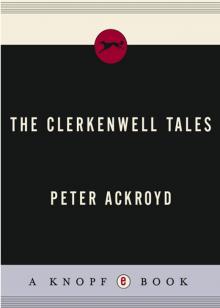 The Clerkenwell Tales
The Clerkenwell Tales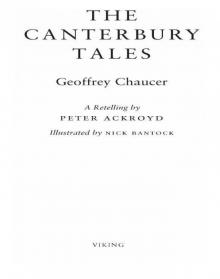 The Canterbury Tales
The Canterbury Tales J. M. W. Turner
J. M. W. Turner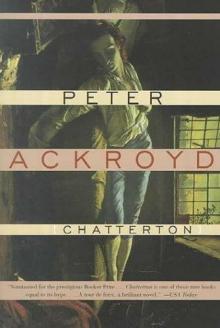 Chatterton
Chatterton The Canterbury Tales – A Retelling
The Canterbury Tales – A Retelling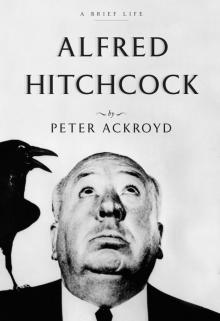 Alfred Hitchcock
Alfred Hitchcock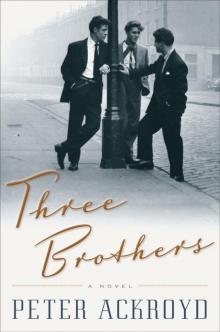 Three Brothers
Three Brothers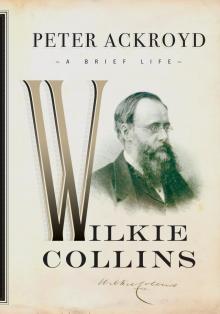 Wilkie Collins
Wilkie Collins Venice
Venice Poe
Poe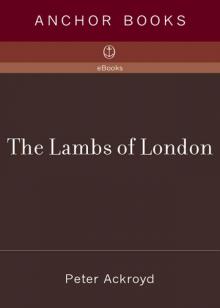 The Lambs of London
The Lambs of London London
London Queer City
Queer City Revolution, a History of England, Volume 4
Revolution, a History of England, Volume 4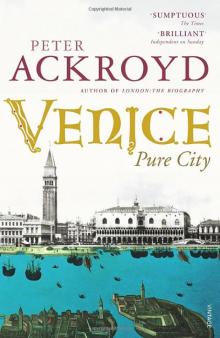 Venice: Pure City
Venice: Pure City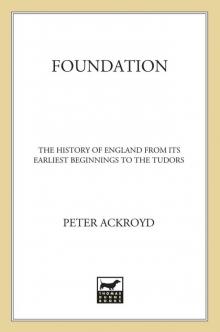 Foundation
Foundation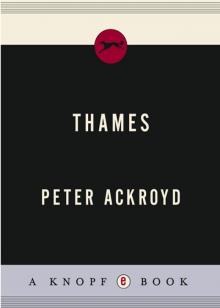 Thames
Thames The Plato Papers
The Plato Papers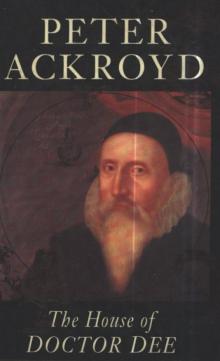 The house of Doctor Dee
The house of Doctor Dee Rebellion: The History of England from James I to the Glorious Revolution
Rebellion: The History of England from James I to the Glorious Revolution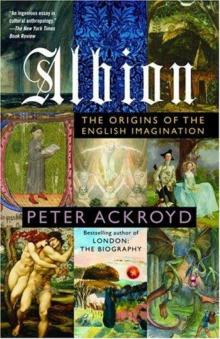 Albion: The Origins of the English Imagination
Albion: The Origins of the English Imagination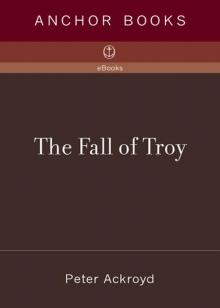 The Fall of Troy
The Fall of Troy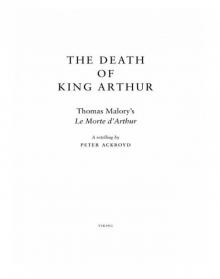 The Death of King Arthur
The Death of King Arthur The Trial of Elizabeth Cree
The Trial of Elizabeth Cree London: The Biography
London: The Biography The Casebook of Victor Frankenstein
The Casebook of Victor Frankenstein Hawksmoor
Hawksmoor Charlie Chaplin
Charlie Chaplin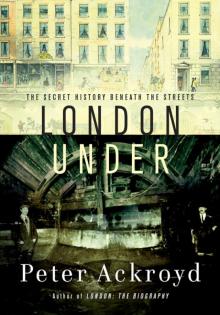 London Under
London Under